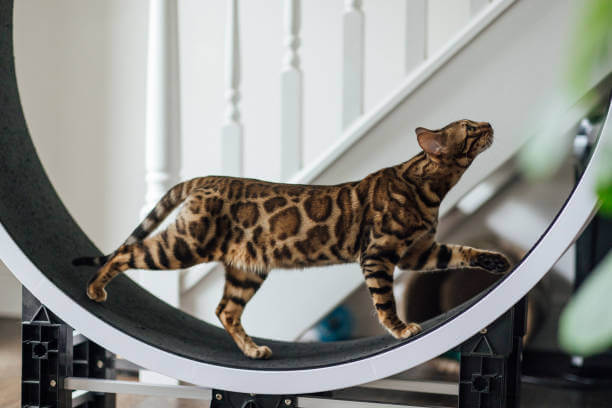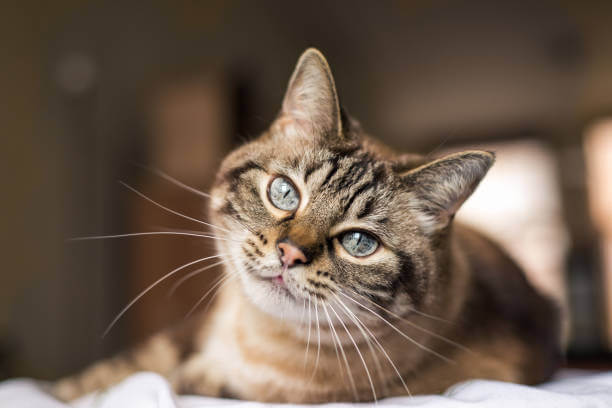Bengal vs Tabby Cats? Cats are known for their elegance, independence, and captivating personalities. However, when it comes to choosing the right cat breed, there are several factors to consider. Two popular choices are Bengal cats and Tabby cats. While both breeds share some similarities, they also possess distinctive characteristics that set them apart. In this article, we’ll explore the differences between Bengal cats and Tabby cats so you can make an informed decision about which furry friend is best suited for your home.

Bengal vs Tabby Cats
Bengal Cats
Bengal cats are strikingly beautiful with their wildcat-like appearance. Their most notable feature is their coat, which resembles that of a leopard or cheetah. Bengal cats have a luxurious short coat covered in unique spotted or marbled patterns. The contrast between their coat color and pattern creates an eye-catching display.
In addition to their stunning coat, Bengals have muscular bodies and strong bones. They have a sleek and agile build that reflects their active nature. With almond-shaped eyes that range from gold to green, Bengals have an intense gaze that adds to their captivating allure.
Tabby Cats
Tabby cats are considered one of the most common domestic cat breeds worldwide. While “tabby” refers to a specific coat pattern rather than a breed itself, tabbies often share similar physical traits. The most recognizable characteristic of tabbies is their distinct coat pattern featuring stripes or swirls on their fur.
Tabbies come in various colors such as brown, grey, orange (often referred to as “marmalade”), and black. They may also exhibit different patterns like classic tabby (bold stripes), mackerel tabby (narrow stripes), or spotted tabby (spots instead of stripes). Tabby cats have expressive eyes, usually in shades of green or gold, that radiate intelligence and curiosity.
Personality Traits
Bengal Cats
Bengals are known for their active and playful nature. They possess a high energy level and require plenty of mental and physical stimulation. These intelligent cats love interactive toys, puzzle feeders, and games that challenge their agility and problem-solving skills. Bengals thrive in an environment that allows them to explore, climb, and play.
While Bengals are typically affectionate with their owners, they also value their independence. They enjoy having their own space but will gladly engage with their human companions when the mood strikes them. Bengals are curious by nature and may exhibit some mischievous behaviors if not given enough outlets for mental stimulation.
Tabby Cats
Tabbies have a reputation for being friendly, social, and adaptable. They generally get along well with people of all ages as well as other pets. Tabby cats often form strong bonds with their human family members and appreciate spending quality time together.
Tabbies tend to be more laid-back compared to Bengals but still enjoy playtime. They are content with interactive toys, scratching posts, or simply observing the world from a sunny windowsill. Tabby cats have a gentle nature that makes them excellent companions for families or individuals seeking a loving and relaxed feline friend.

Grooming Needs
Bengal Cats
Bengal cats have relatively low grooming needs thanks to their short coats. A weekly brushing session is typically sufficient to keep their coat looking its best. Additionally, regular nail trims and dental care should be included in their grooming routine.
Tabby Cats
Tabbies also have short coats that require minimal maintenance. Regular brushing helps remove loose hairs while keeping the coat shiny and healthy. As with any cat breed, dental care, nail trims, and occasional ear cleaning are important aspects of maintaining your tabby’s overall well-being.
Living Environment
Bengal Cats
Bengal cats thrive in an environment that allows them to express their natural instincts. Providing them with vertical spaces, such as tall cat trees or shelving, allows Bengals to climb and observe their surroundings. It’s also important to engage them in interactive play sessions to keep their minds sharp and bodies exercised.
Tabby Cats
Tabbies are generally adaptable and can adjust well to different living environments. While they appreciate having access to windows for bird-watching, a cozy bed, and a scratching post, they are often content with the simple pleasures of indoor life. Creating comfortable spaces for relaxation, alongside opportunities for playtime and exploration, ensures your tabby remains happy and fulfilled.
Do Bengals Have An “M” On Their Foreheads?
Bengal cats do not have an “M” on their forehead, as is commonly thought. The “M” myth can be attributed to the classic tabby pattern, which does often feature a distinctive “M” shape between the cat’s eyes. While Bengals may exhibit stripes or swirls similar in appearance to a tabby’s coat pattern
Bengals are also known for their intelligence and willingness to learn tricks. They can quickly become proficient at walking on a leash, playing fetch with toys, or using a litter box. Furthermore, Bengals are highly food motivated and may be easier to train than other cats due to their eagerness for treats. With patience and consistency, you can even teach your Bengal new behaviors
Bengals are typically loyal to their owners and can form strong bonds with them. They make excellent companions for those who enjoy an active lifestyle, or simply desire a cozy cuddle buddy. If you’re looking for a companion cat that is both smart and affectionate, the Bengal breed may be your perfect match. With its unique combination of beauty and intelligence, it’s no wonder that the Bengal cat is one of the most popular breeds today.
Overall, Bengals and Tabby cats make great companions for individuals and families alike. They have different personalities, coat colors, grooming needs, and living requirements that should be taken into consideration. While both breeds are intelligent and loving, knowing their individual traits can help you decide which type of cat is the best choice for your home and lifestyle. With the right love and care, a Bengal or Tabby cat can be an enriching addition to any family.
Is My Cat a Bengal Or a Tabby?
The best way to determine if your cat is a purebred Bengal or Tabby is to consult a veterinarian. If your cat has the classic tabby coat pattern, it’s likely that they are not a purebred Bengal. That said, there is no one-size-fits-all answer as each breed has its own unique characteristics, and many cats may share similar traits. Ultimately, getting to know your cat’s individual personality and characteristics is the best way to determine whether they are a Bengal or Tabby cat.
In general, Bengals have a more active and energetic nature than their tabby counterparts. They enjoy engaging in interactive playtime, climbing high spaces, and learning new tricks. Tabbies tend to be more laid back and enjoy simple pleasures such as sleeping in the sun, bird-watching from a windowsill, or spending time with their human family members.
FAQS
Q: How much exercise does a Bengal or Tabby need?
A: Both Bengals and Tabbies require daily physical exercise and mental stimulation to stay healthy and happy. Regular play sessions, interactive toys, as well as providing vertical spaces such as tall cat trees or shelves can help keep your cat active and engaged.
Q: What is the difference between a Bengal and Tabby cat?
A: Bengals are typically more active and energetic compared to Tabbies. They enjoy engaging in interactive playtime, climbing high spaces, and learning new tricks. Tabbies tend to be more laid back and enjoy simple pleasures such as bird-watching from a windowsill or spending time with their human family members.
Q: Do Bengals and Tabby cats require different grooming needs?
A: Both Bengals and Tabbies have relatively low grooming needs thanks to their short coats. A weekly brushing session is typically sufficient to keep their coat looking its best.
Q: A: Bengals and Tabbies are both intelligent breeds and can be trained with patience and consistency. Bengals may be easier to train than other cats due to their eagerness for treats, and they can quickly learn how to walk on a leash or use a litter box. Training your cat also strengthens the bond between you and your pet.
Q: Are Bengals or Tabby cats better suited for a particular living environment?
A: Bengals thrive in an environment that allows them to express their natural instincts, and require plenty of mental and physical stimulation. Providing vertical spaces, such as tall cat trees or shelving, can help keep your Bengal active and engaged.
Conclusion
The Bengal and Tabby cat breeds offer plenty of unique characteristics that make them a great addition to any family. Knowing their individual personalities and characteristics can help you determine which breed is the best match for your home and lifestyle. Both Bengals and Tabbies require plenty of exercise, mental stimulation, and love to stay happy and healthy. With the right care and attention Bengals and Tabbies make wonderful companions who will enrich your life in ways you never dreamed of. From their unique coat patterns to their intelligence and loyalty, there’s no doubt that these cats will bring a lifetime of joy into your home – if you give them the chance!
